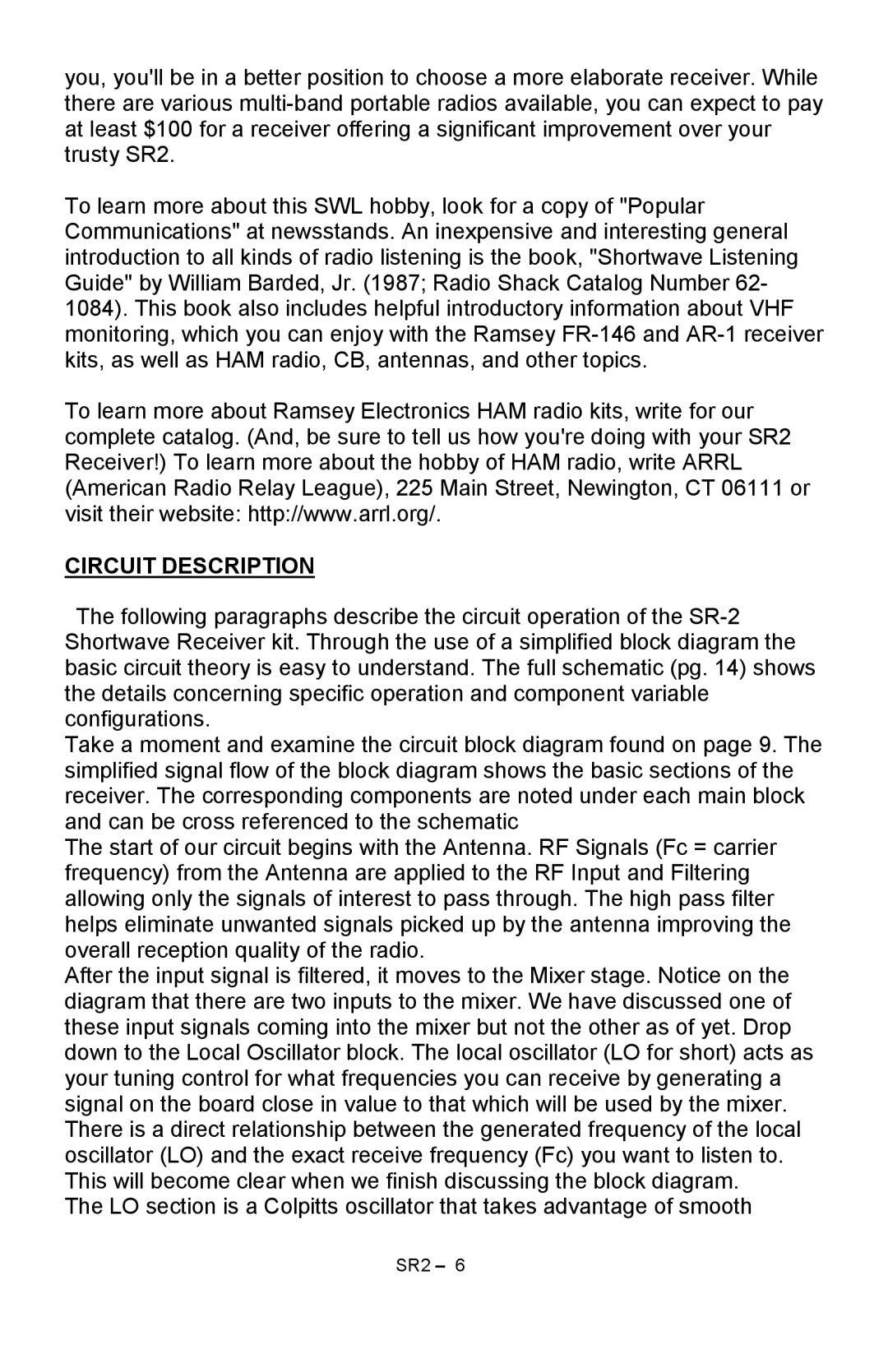SR2 specifications
The Ramsey Electronics SR2 is a versatile and robust RF transmitter designed for a range of applications, including hobbyist projects, educational purposes, and practical uses in the field of amateur radio. Its compact size and user-friendly design make it a popular choice among enthusiasts and professionals alike.One of the standout features of the SR2 is its frequency range, which typically spans from 88 MHz to 108 MHz. This wide range allows users to operate within the FM band, making it suitable for transmitting audio signals, music, or voice communications. This flexibility is particularly advantageous for those interested in creating their own radio stations or conducting experiments in radio frequency communication.
The SR2 utilizes advanced technology to ensure high-quality transmission. It incorporates modulation techniques that enhance audio clarity and reduce noise, resulting in a smoother listening experience. The transmitter is also equipped with a low distortion audio preamplifier, ensuring that sound quality remains pristine even at higher transmission stages.
Another important characteristic of the SR2 is its ease of assembly. The kit comes with all necessary components, including a printed circuit board (PCB), which simplifies the building process for users. Detailed instructions guide the user through the assembly, making it accessible even for those with limited electronics experience.
The SR2 also boasts a power output of approximately 100 mW, allowing for a transmission range of up to several miles, depending on the surroundings and antenna used. This power level strikes a balance between effective transmission and energy efficiency, catering to various operational settings.
In terms of design, the SR2 features a compact enclosure that protects the internal components from dust and damage, which is vital for maintaining reliability in various environments. Its user-friendly interface includes adjustable controls for tuning and volume, enabling users to customize their transmission settings easily.
Additionally, the SR2 is compatible with a variety of external audio sources, such as microphones, CD players, and smartphones, enhancing its versatility. The unit can be powered by standard power supplies or batteries, making it suitable for both portable and stationary use.
Overall, the Ramsey Electronics SR2 is a well-designed RF transmitter that combines quality, functionality, and ease of use, making it an excellent choice for anyone looking to explore the world of radio transmission.
